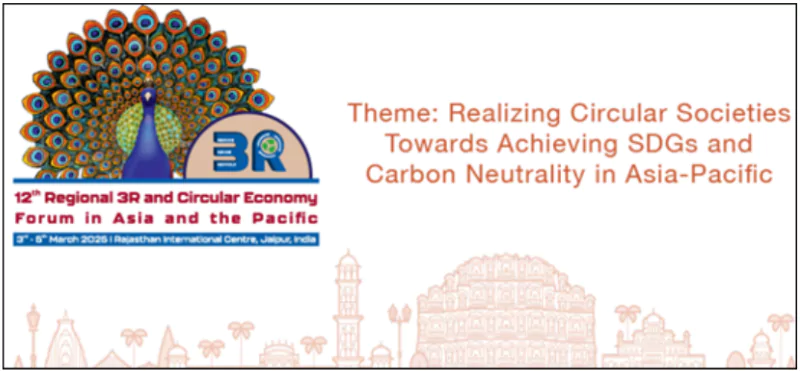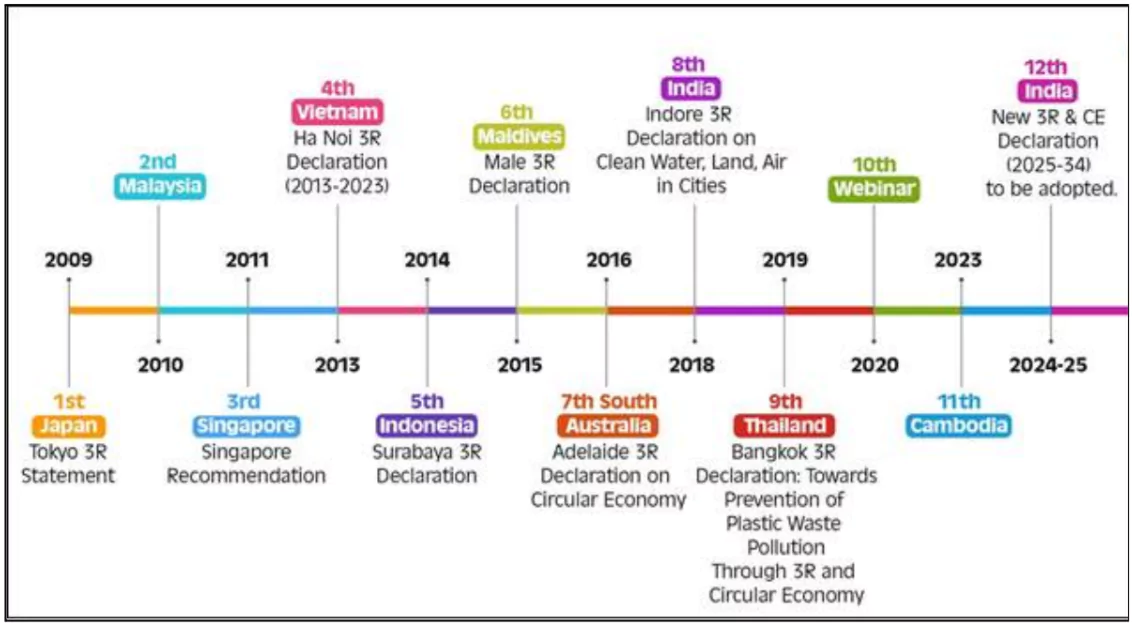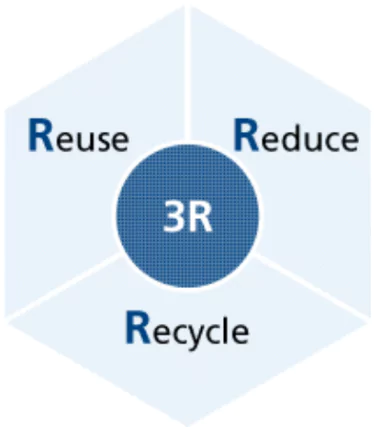![]() 4 Mar 2025
4 Mar 2025

India has launched the Cities Coalition for Circularity initiative at the 12th Regional 3R and Circular Economy Forum in Asia and the Pacific that was held in Jaipur.
 Focus Areas: Addressing challenges like rapid economic growth, resource depletion, and rising waste generation.
Focus Areas: Addressing challenges like rapid economic growth, resource depletion, and rising waste generation.

<div class="new-fform">
</div>